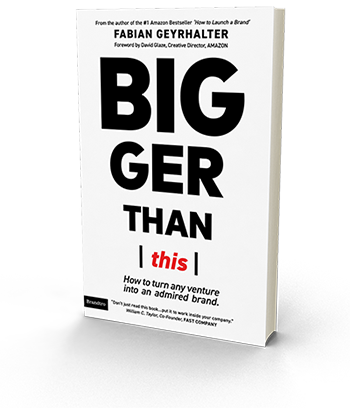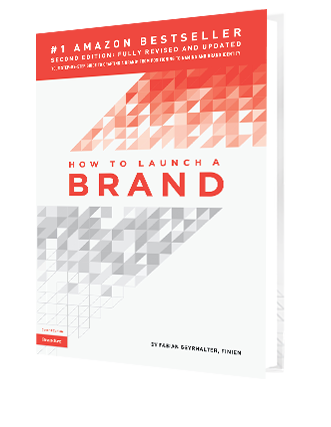Your Brand Launch: Brand Strategy
Vision Critical: How to Cut Through The Brand Statement Clutter
Creating a positioning statement, a mission statement and a vision statement. Not to mention the mighty elevator pitch. It can drive Founders of new, and CMO’s of not so new ventures completely insane.
Rightfully so.
How much do they really differ? Which comes first? How do I translate one into another? Does anyone really care, or will I only create statement confusion, brand angst or promise dizziness amongst my team and my audience?
Start with these 2 steps in order to not go insane while you craft what really should be a wonderful A-HA experience for yourself and your team:
1. Get The One And Only Statement You Will Never Publish Right
You won’t use your positioning statement ever; in public that is.
Yet, this is the very sentence that will drive everything about your brand. The positioning statement is your brand in a one sentence statement. It’s not a quick read (most often it’s a mouthful) and it is not meant to be outward-facing. This one is for your eyes only. It is crafted so you can base any and all other brand statements on it. It is everything about your brand: The who, the how, the what and the all-important why. A business plan disguised in a brand coat.
2. Fuse Mission And Vision Statements Into One – The One And Only You Will Publish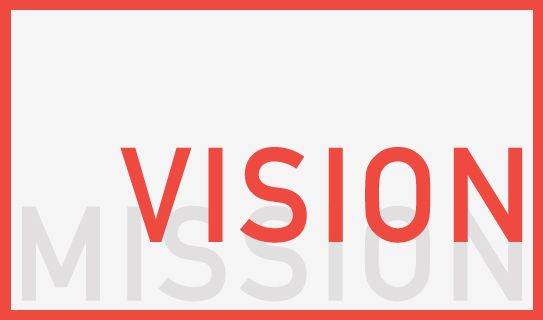
Once you have the positioning statement noted, translate it into a vision/mission statement combo. Yes, in my eyes they can be one and the same; it’s all you need.
When you think about the mission you are on, it can, and should translate into the big vision, or the ‘true north‘ you foresee for your brand. Make it easy for people and create one powerfully inspiring statement that is built on the ‘why’ – anything happening after the ‘because’ from within aforementioned positioning statement.
Taking the Alzheimer’s Association as an example, albeit a bit wordy. Currently we see two separate statements on their web site:
Using my proposed approach, these could be simply morphed into one powerful brand statement:
“[MISSION] We are on a mission to eliminate Alzheimer’s disease through the advancement of research; to provide and enhance care and support for all affected; and to reduce the risk of dementia through the promotion of brain health [VISION] in order to ultimately live in a world without Alzheimer’s disease.“
The mission is what you are currently setting out to achieve (and often are already achieving). The vision is the big, lofty goal. One should lead to another; naturally. By doing so it does not lead to statement confusion, instead you tell the story in a chronological order; a logical order, really.
- Positioning = the brand foundation
- Mission/Vision = showcased publicly, the ‘brand statement’
- Elevator pitch = in conversation only
There you have it, your public brand statement, plus two helpers.
Now go spend the extra time putting the words into action. Your team will thank you.
Coin It: 3 Reasons Why Your Venture Needs To Develop Nomenclature
Getting a venture off the ground is tough. Competing against similar startups and established players along the way is even tougher.
One tool to add to your ‘brand insurance box’ (you know, the things you do that make your venture a strong brand) is also one of the simplest and most valuable branding efforts you can undertake: creating a term you can own.
Below I outline 3 reasons why owning your language will leave a quantifiable mark on your brand:
1. It Differentiates You From Your Competitors
Don’t come up with a term for branding’s sake, rather evolve it naturally. The last thing you want to do is to confuse your customer with strange lingo, instead you want to inform and educate. Think of industry terms that are being used within your segment by your customers – are they all clearly saying what you’d want them to say, or are some misguiding, perhaps even outdated based on the solution your venture offers? Some you might flat-out hate or poke fun at regularly for good reason.
I, for instance, hated the term ‘brand collateral’ to describe the pieces a brand uses to communicate its brand values, visuals and language to clients, consumers and prospects. During the process of writing the book ‘How to Launch a Brand,’ I demanded a better term for the visual and verbal brand communication pieces and I coined the term ‘Brand Atmospheres.’ To me it made for a much stronger and all-encompassing description that felt logical rather than confusing. I trademarked the term, linked it to our web site, named one of four chapters in the book after it and soon prospects started talking about how ‘they needed to revisit their Brand Atmospheres.’ Long gone were brand collateral conversations.
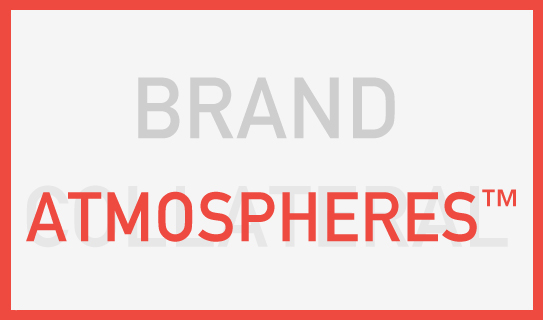
It’s not on the scale of someone asking for a Kleenex or making a Xerox of a document, but within my niche it made me realize just how much of a differentiator it became to have marked a term that is being used in conversations by prospect clients. It strengthens the brand perception and creates an immediate relationship between prospect and provider.
2. It Establishes Immediate Trust
Maybe you have a process, a specific way of doing things? Will you call it ‘Our unique process’ or will you actually give it a unique name that describes your thinking in a better way? I named our one day brand strategy workshop for startups ‘Resonaid,’ to further describe the function of the workshop: It serves as an aid to make your brand resonate with its customer from the get-go. It turned our process into a product that is instantly tangible as well as ownable.
The unique thing you do, whatever it may be, give it a unique name. If it’s unique it deserves it; perhaps even demands it.
People trust something you truly own (up to). It not only adds importance, it also makes it unique to you, which relates to your offering as being substantial, or substantially better than the one of your competitors. Most founders start at the brand name and end at the product name missing out on all the terms in between, which establish trust along the way of the decision making process.
3. It Creates Intrigue And Belonging
Creating a lingo is like your own secret language, which won’t remain a mystery for long. It’s like writing with invisible ink, only that everyone will ask you to see it. Everyone will want to be ‘in the know’ and once they are, they will be darn proud of it. They have a sense of belonging. They don’t grab donuts at Strange Donuts in St. Louis, no, they grab dones. They call me and ask for a Resonaid workshop, not about the ‘brand creation’ workshop.
Adding intrigue to a brand is every marketers goal. Usually that involves big campaigns on even bigger budgets. By adding unique nomenclature to your branding efforts, you hit that intrigue mark on a much tighter budget.
While other startups try to become ‘the Uber of their industry’ why don’t you take the direction of becoming ‘the Kleenex of your industry’ instead? They will call you by your name. Promised.
Re-think Your Elevator Pitch: How To Successfully Introduce Your Brand In Conversation
It’s not that you don’t need to think about your elevator pitch, but I want you to think differently about it.
Like everything in your business, you should not focus on the what, when and how initially, but think about the why instead. You are seeking a specific outcome. What is that outcome? The answer is simple: You need to get people to understand what you do and you’d like them to care about it; perhaps care enough to start seeing you as a prospect to conduct business with, but at the very least enough to continue the conversation with you rather than dashing away towards a more interesting crowd – the crowd that does not pitch them, but that stimulates meaningful conversations. That is the kind of crowd you need to embody.
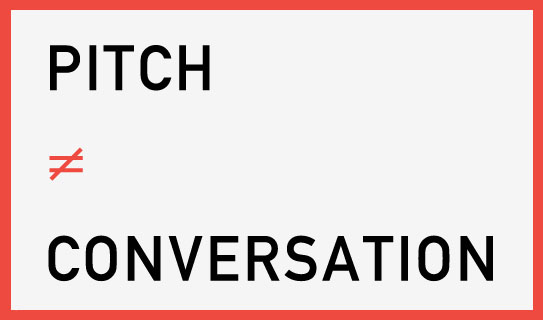
Why should a good conversation include a trained, and most often awkward, pitch? Don’t spend time writing your elevator pitch line, instead think about how you could trigger a question in the person that asked about what you do. Don’t make it into a question (because that really is a pitch), but into a statement that triggers a question.
Don’t craft a monologue sentence about your venture’s operations and target audience, instead think about how you would tell a new friend after a long dinner (potentially with a few alcoholic beverages involved) once they ask ‘So what do you do for a living?’ I bet the answer would not be your trained elevator pitch, instead it would be a very casual and passionate way of stating that thing you do to generate income. Simple and honest. A continuation down the dialogue road that you have already situated yourself on. It takes time, energy and sometimes gut to engage in, and continue, a meaningful conversation with a stranger, especially in business settings such as conferences and summits.
Don’t let the elevator pitch kill what you have established.
When I re-positioned my design and brand agency (Geyrhalter & Company) into FINIEN a few years ago, I initially took the same (wrong) path down the elevator pitch road. Here is how that sounded: ‘We are a specialized brand consultancy creating brand strategy, brand names and brand identities for new ventures.’
No! Boooring. Oh boy, there must be many of those consultancies. It sounded great on my plane ride to the conference. Yes, I noted it down and memorized it; it truly was my elevator pitch. Then I tested it in social settings and it was awful. No one, seriously not a single person, cared.
After lunch that day I changed it to: ‘We make sure startups get branding right from the get-go’ – Ha! Interesting. – That’s cool. Tell me more. – Boy, that truly is a real pain point you are solving.
Bingo!
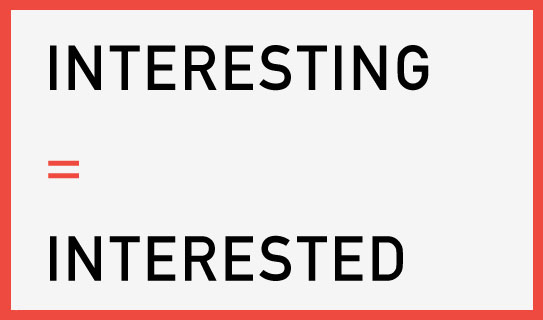
During evening activities that day it changed to a bolder ‘We ensure startups don’t screw up branding’ and it was an instant hit (with follow-ups turning into actual clients).
Simple, personal, interesting. Created to continue a conversation, while moving it towards how I can be of assistance to the person I was not pitching, but simply chatting with. I did not stutter through a memorized statement (that’ll be an elevator pitch), instead I created a very simple conversation starter.
Just like with all things branding, you have to be interesting in order to have someone be interested in you. So skip that pitch and think of the easiest, shortest, most casual and distinct way you can say what you do that only begs for one single outcome: the amicable continuation of your conversation in context of your brand.
Why The ‘Best Brand’ Name Is Not The Best Option For Your Product Launch
Brand Positioning is an art form. It is essential to the success of your venture and it is a topic we have given you plenty of guidance on. Even when it comes to something as important as positioning, just like with most things branding, there are definite fads happening. Recently these dangerous turns in brand positioning have hit actual brand names, which we all know can not change easily over time. That kind of positioning, in a nutshell, sounds something like this:
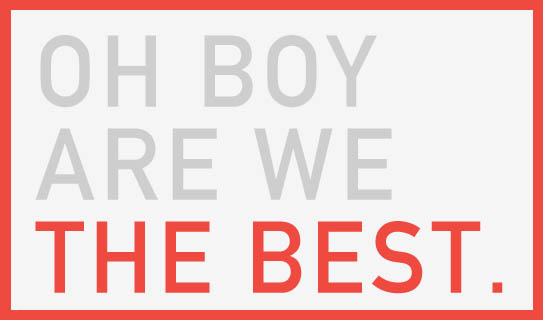
“We are the best. Seriously, we are.” Oh crap! No, you are not.
Everyone thinks their product is the best, but the market will tell you if in fact you are the best. You don’t tell the market that, the market tells you that. It seems like a no-brainer, something no branding expert needs to call out, especially given the joined consensus of the next generation of buyers (to avoid the M-word) that believe in inclusivity, honesty and modesty. Yet we have seen a flood of new brands positioning themselves as being the best through their actual brand names over the past years. In doing so, there is no turning back for them and their ‘strategic’ cockiness.
Especially in the snack food arena, ‘greatness’ in name positioning has overwhelmed the market place. Here’s a sampling of four such brands that I ran into at the market the other day:
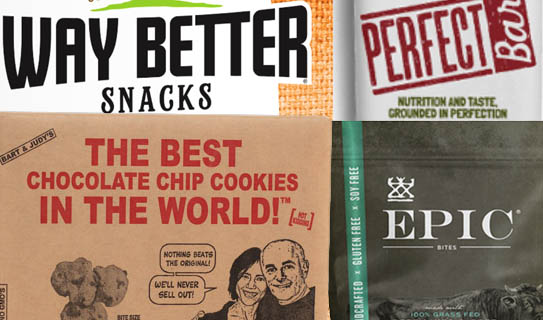
Despite their often superior ingredients, and sometimes great taste (sometimes the opposite), naming a new product ‘way better,’ ‘perfect,’ ‘epic,’ or ‘the best in the world,’ falls nothing short of uninspired.
That is one thing.
More important though is the fact that consumers find it hard to believe a new brand can make such claim. Naming your product in an overpromising manner will attract highly critical customers from the get-go. Guaranteed. And many who will mock you. Your strategy is asking for it. And very likely you won’t be able to satisfy their appetite for tasting ‘the best’ to them as that is solely depending on individual tastes. Such statement coming from a brand itself as part of their brand name does not gain trust and nearly assures that a let-down is imminent – especially for startups that lack shelf-space and marketing dollars to hope for intrigued one-time buyers potentially turning into converts.
If consumers are looking for the perfect snack bar, the best cookie or way better snacks (and who isn’t?), fulfill their quest instead by providing specific guidance on facts, ingredients and testimonials through your brand language and marketing campaigns. It is a safe guard to ensure that your product in fact will live up to their unique expectations. Instead of describing what you think differentiates your product (or makes it float high above the rest) in your brand name, position your brand name as one that consumers like to talk about without feeling funny or being ridiculed. It will spare you of the same fate.
(Pretty epic advice, right? Without a doubt the best post in the world.)
3 Brand Lessons to ‘Trump’ Them All
There is something very sincere we can learn from ‘The Donald.’
This article was originally published as part of my column in Inc.
A long time ago, I made a promise to myself that I wouldn’t ever touch upon politics in my writing. I broke my rule back in February when I was interviewed by The Washington Post on Hillary Clinton’s brand, comparing its legacy to that of McDonald’s. I sure broke my rule nicely. So here I go, breaking all my rules in one sentence, yet again:
There is something very sincere we can learn from Mr. Donald Trump.
Before you hit the comments field in rage, let me explain. ‘The Donald’ is quintessential branding in the making, and we can all witness it live, night after night.
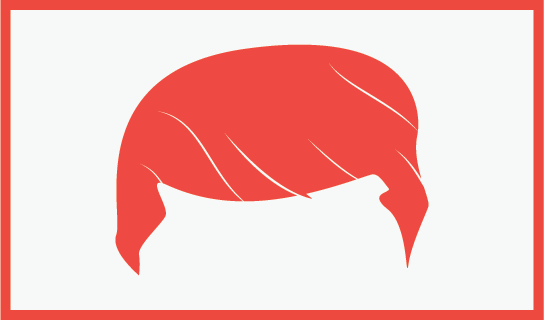
I recently came back to Los Angeles from a three-week European vacation. As I left the U.S. for my trip, I started worrying that Trump would become the center of every conversation I’d have with friends and strangers alike. From answering the ‘Do Americans really like him?,’ the ‘Could he really become President of the United States?’ and, of course, the most dreaded, ‘What do you think’? In the end, the conversation only came up once, and instead of my expected response, I found myself somewhat defending the idea that is Trump. I was shocked.
It turns out I am actually fascinated by the Trump persona and brand, even though politically and intellectually I would like to remove myself rather far from his viewpoints. The fascination comes from something truly mesmerizing, something that has nothing to do with the political Trump brand. New and steadily growing ventures alike can utilize these 3 lessons I learned from Trump to turn into better brands — even if they otherwise grunt at the TV and look the other way when ‘The Donald’ disrupts their dinner:
1. Be A Frank Brand
A Donald brand is a Frank brand. It’s confusing, I know, but you cannot refrain from looking in awe at this man’s candor. If anyone, it should be Mr. Trump that reads off perfectly crafted scripts and not answer any unvetted questions, yet he walks on stage and goes off-script within seconds. Despite everything that comes out of his mouth (and much is met with regret by many on his team, not to mention his wife), it is his candor that makes him feel different, honest… a true go-getter. He defines showmanship through a very unique personality — raw and uncensored. That’s what today’s voters and consumers alike are aching for in both people and brands: being truthful and having the guts to give it to me straight. The days of scripted press releases are numbered. How can your brand make that switch? Clearly if Trump draws a crowd that way, your brand can achieve the same (without the drawbacks) if you speak your mind to an audience that thinks alike. By eliminating some, you will earn many others.
2. Craft a Hit – Then Hit Repeat
Rolling Stone quotes Gwenda Blair (Author of Donald Trump: Master Apprentice) saying “It’s all he does, the bragging and the repetition: It’s called branding, and he’s relentless at it.”‘ Over and over again you will hear the same statements about his money, the other — the bad — rich folks, and China with a bit of ‘bad Obama’ and taxes we should be getting from foreign companies sprinkled on top. Step and repeat. Fear of getting boring? Look at Nike’s Twitter bio today. What does it say? ‘#justdoit’ – and that’s it. Nothing more. Nothing less. Nothing new — and that’s just fine. If the message was crafted with its audience in mind and is well received by that audience, stick to it. Relentlessly. Seek your hit and start playing it like Trump.
3. Turn Surreal Into Real
Though we may often think of Trump as far removed from reality (and his voters), he has found an audience of blue-collar working class citizens who deeply connect with him — a man who lives with a self-proclaimed and oft-questioned 2014 income of $362 million. Herein lies the magic from a branding point of view: his life is surreal, but he translates it into a reality that his audience can relate to. It’s quite magical. Marketing in and of itself is a very surreal form of communication. You assume a lot about your audience while being stuck with the point of view of an advertiser or business. Once you hit the green light on an E-Blast, a magazine ad publication or a Facebook post, you witness surreal turning into real. The more you think like the ones on the receiving side, the more real it will become. And that’s where you need to be: part of reality as a real, honest and truthful brand.
Indeed, being uniquely and truly yourself, not worrying about the haters, repeating the best stories and the ones that connect are all part of what makes great brands.
As for Donald, he may not become the next President of the United States, but he sure makes for a grand brand spectacle we can all learn from. In moderation, of course.
‘This Black Friday, We’re Closing All Our 143 Stores’
See grain. Go against it.
In a wonderful promotion that goes straight to the heart of its brand, outdoors consumer product brand REI (Recreational Equipment Inc) decided to remain closed this Black Friday. It will instead pay its employees to spend the day outside. An idea that is so nuts for a big retailer, that will lose important revenue on the biggest revenue generating day of the year, that would never go past any Board of Directors or Shareholders…that it makes for the perfect promotion for REI to pull off.
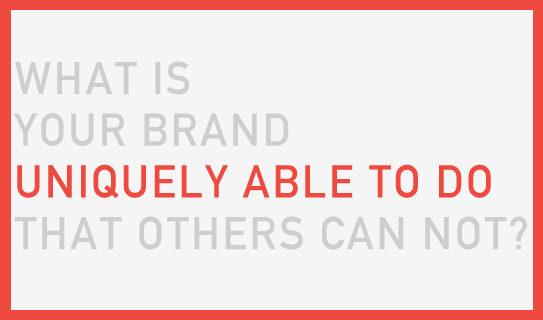
That is the question I always ask startups as I help define their brand strategy. What is it that makes you so unique and how can you leverage your uniqueness to gain hearts?
REI is a co-op. It is owned by its members, its shoppers, by all of us. If anyone, they are uniquely able to ‘#optoutside.’ A genius move that goes deep into the heart of the outdoors brand and its loyal audience: “While the rest of the world is fighting it out in the aisles, we hope to see you in the great outdoors.” Opt Outside. The revenue that they will (likely) lose that day, they are gaining in lifelong, renewed, love by its members. A love that is worth every penny (used solely as a metaphor) of their Black Friday losses. Money can’t buy what this strategy will give back to their brand.
What is your takeaway?
Well, what is your startup uniquely able to do? Define and follow it to connect with your audience in deeper, more meaningful and plenty of profitable ways. Oh, one more detail: Have the courage to execute upon it.
How Your New Brand Can Connect With An Audience Like A Pop Song
I saw the 90’s Britpop band Blur at the Hollywood Bowl last night (If you don’t recall them, I captured a few pivotal seconds for you).
It seemed as though they were as surprised to be on stage as were the fans seeing them tour. It was rather special. Not that I am a fan by any means – I was always leaning towards Oasis. Furthermore I belong to the 1% that appreciate their latest work more than their hits, which made watching a 90’s hit band and their fans solely interacting based on their hits a rather interesting experience.
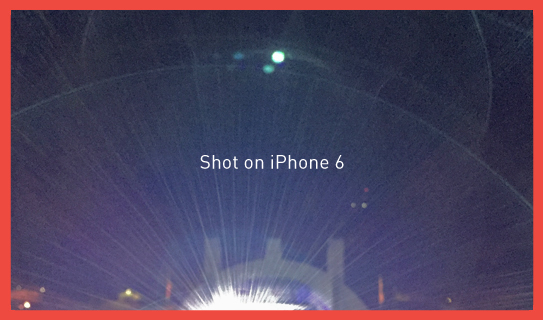
Fans went nuts and sang along word for word to songs that were really not all that great. There was a feverish sparkle in their eyes. They were filled with joy. There may have been some tears. It was a spectacle watching the spectators.
None of this was about the band at all. It wasn’t about the songs that stuck with them since adolescence. Maybe it was about colorful cassette tapes and the smell of vinyl records, about cool band t-shirts and cherished ex-boyfriends. It was indeed about the memories the audience associated with the songs, about the times they were listening to Blur all the time.
It was all about them, not about the band that they cheered for. Everyone celebrated moments they once had, and together they added a new moment to it. Life, as we know, is about a collection of moments after all.
Remember the Kodak Moment? Today it is Shot on iPhone 6. A spectacular way to connect a very special moment that was captured to your brand. Only the most amazing moments are worthy that brand association. Remember the time you ran your very first marathon and were handed a Gatorade at the finish line? A moment you won’t forget. You are drinking Gatorade after your workouts ever since, not quite knowing why.
As a new, or young brand, make it your goal to be part of memories. Or even better: Be a facilitator of those moments. Be the brand that cheers.
On my way to the car after the concert last night I encountered a young homeless man on the sidewalk. His sign read: ‘Begging sucks. Compassion doesn’t.’
Marketing sucks. Being part of special moments doesn’t.
Can’t Steal Our Vibe
A little while ago I was driving through Venice (California) and noticed a surf shop that must have recently gotten broken into.
I was mesmerized and quickly snapped a picture out of the car:
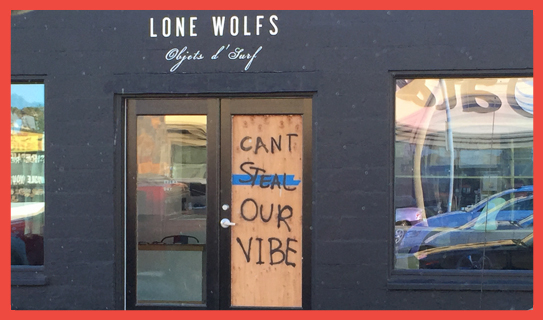
To me these 4 simple words so masterfully describe how we help our clients derive their company’s true soul. What we are really doing is determining the ‘vibe’. A vibe that you can fully embody and that others can fully embrace. A vibe that one day turns into your norm and that you spread with ease. A vibe that if competitors come in, they can no longer simply steal.
That vibe is how Keith Moon played the drums or how Craig Kelly surfed the snow. There have been plenty of amazing drummers and snowboarders, but they can’t touch that style, that vibe.
How poppin makes receiving a stapler in the mail exciting? It’s their vibe.
That vibe is the foundation to their brand.
“Can’t Steal Our Vibe.” Street culture poetry that every company transitioning into a brand can learn from.
If all fails, if all gets stolen, what does your brand still own? What is that foundation that you can rebuild upon with ease, because it is based on passion and emotions and not products and numbers?
How to Build Your Retail Brand on a 4-Letter Word Only You Can Own
I recently had a brand consultation call (via Clarity) with a fashion accessory startup from Singapore working on a convincing new product that perfectly fits into a niche yet also has the opportunity to take over it completely.
If they ever get that far.
The startup needs to go head-to-head with the largest players in the space in order to succeed; a space where big brand names are key to morphing indecisive shoppers into on-the-spot buyers. I saw their value proposition after talking with them for ten minutes, but how will they ensure to get noticed in split seconds? Are consumers willing to pay the same for a new no-name brand as they would for the time-tested brand names one wants to be seen sporting? Heading towards major competition, I had one advice for her going into a saturated B2C/Retail market:
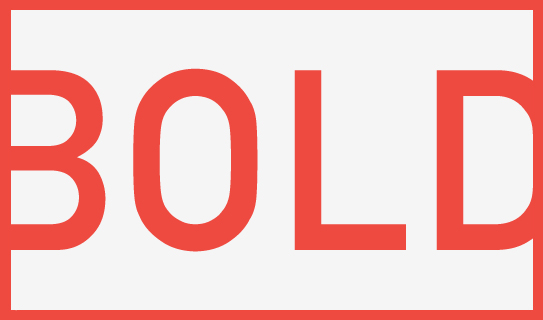
Be BOLD
The big players can be sexy, smooth, sophisticated, glamorous, heck…they can be anything money can buy. Bigger displays, more massive campaigns, bigger celebrity endorsements, stupendous photo shoots. There’s one thing only you can, and they can’t: You can be BOLD.
It is a 4-letter word, and you can own many more of those if you’d like – and not in the fabricated manner FCUK did. Words others can only hesitantly type, you can actually be. They may go bold on a marketing campaign, but your brand can launch being bold – with an immense amount of attitude and moxie. You can shout. You can be loud. It might be the only way you’ll get noticed.
Look at your product and examine your competitors. Analyze the single most important and unique attribute describing your brand; an attribute you can own in your segment. Is it empowering, motivating, strengthening, enriching? Then look at what outrageous thing you could do to make your audience love you, that is based on this single attribute.
T-Mobile, who you’d think of as being far removed from being a startup, had to switch gears in recent years and started looking at themselves as a rebellious startup in order to survive, and thrive. And boy did they go bold and are crushing it today. Re-establishing themselves as the ‘Un-carrier,’ T-Mobile is throwing around the words free, included and unlimited just as much as Rebel-CEO John Legere says ‘those fuckers,’ describing the other big players in the field. Those players are the ones that are now falling behind. A short story about a large corporation trying to be as bold as a startup. So, what stops you as a startup from going bold?
Surpass FEAR
Fear is the only reason why most startup founders don’t take the most rewarding risk of their lifetime. You are scared to fail. You are afraid to use crazy names (yes, unpronounceable products), make everyone who buys a first edition a shareholder, give away your product for free, launch it double the price of your biggest competitor, and on goes the list of outrageousness to chose from. But you are scared to take (hold on, bonus 4-letter word magic coming up) risk.
Gain LOVE
Take a step back and analyze your situation: Only you can do it because you have very little to lose by going all-in, full-on bold. All you can gain is customers that not only like your stuff, but love it. They will build a small army of early brand ambassadors for you. For free. That is, in return of you going totally bold and having no fear. Modern consumers ache for brands like that, we all do.
When you analyze your competition, look at what bold steps they have taken lately that are not shallow campaigns, but actually built on true brand beliefs. You may notice that this is a weakness your startup can turn into its key strength. But first: Drop that fear.
How Subliminal And Hidden Design Messages Can Boost Brand Engagement
This article was first published via Mashable.
A handful of brands keep their loyal advocates excited and engaged by using hidden design language to tell the bigger stories in a highly visual, yet subliminal manner. And that is exactly why we are drawn to them: We seek to be “in-the-know.”
Secretive design language is widely used on web sites as “Easter eggs,” within products as hidden features, as hidden offerings by food providers (In’N’Out’s secret menu or Bible citations on the packaging, for example) and even on passports as security enhancements, like Norway’s next passport design.
Utilizing design secrets to share underlying themes is a powerful brand statement — one that helps gain buzz and keeps believers lining up for more.

Very much like the speakeasy that has no sign out front and is incredibly hard to find, we are attracted to brands that challenge us intellectually and hide elements from plain sight. Seeing and connecting them makes us feel special, and that is one wonderful feeling that a brand can trigger within their audience.
Here are two ways your brand can turn to the subliminal to get its audience engaged.
Opportunity 1: Let Your Brand Identity Speak Through Design
Brand identities, or simply ‘logos,’ are the most common place to find hidden messages and deeper meaning at the very top of the visual brand pyramid. The arrow between the letters ‘E’ and ‘x’ in the FedEx logotype is the go-to example for subliminal messaging in logotypes, but you can find them all around you.
As shown by Amazon’s “delivering a smile and products from A-Z” and Baskin-Robbins’ “31 flavors,” key messages are often hidden within a logo. Today’s clever tech startups that understand the power of brand story telling are right on their heels.
A brand’s identity needs to say many things, and graphic designers go beyond the obvious to achieve all, or at least most, of the objectives, having to pull out some visual tricks to fit them all in. Once the audience finds out about a hidden element in the brand identity, it feels more connected to the brand itself, as if it’s part of their secret.
We love sharing that secret with others. Today, we call that virality. Your logo alone can get people talking about the deeper meaning behind your brand.
Opportunity 2: Add Unexpected Layers to Your Brand Atmosphere
Your Brand Atmosphere is your visual foot print. It is what your audience sees when they get in touch with your brand image. It’s everything from your collateral and online presence to trade show booths and your email signature. Brand Atmosphere represents another opportunity to tap into the power of hidden design language.
When my brand consultancy was asked to create the visual image for Martian Ranch and Vineyard a few years ago, we were thrilled to learn that the name actually stemmed from the founding couple’s sons, Martin and Ian. Cleverly, they put the two words together to formulate a name for their next big offering, the winery Martian.
Given the name, the client’s directive from the get-go was to craft a Martian character to grace the wine labels and represent the Martian brand. My agency, however, did not love the thought of being greeted by a Martian, not with a $22-$35 bottle of biodynamic California wine and a brand that stands for much more than what the name implies.
Ensuring a happy ending, or a happy landing so to speak, we allowed the Martian to make its way into the brand’s design, but we restricted its appearances in a refined manner. When a consumer opens the bottle, for example, Martians are dancing around the cork, drinking in a festive manner.
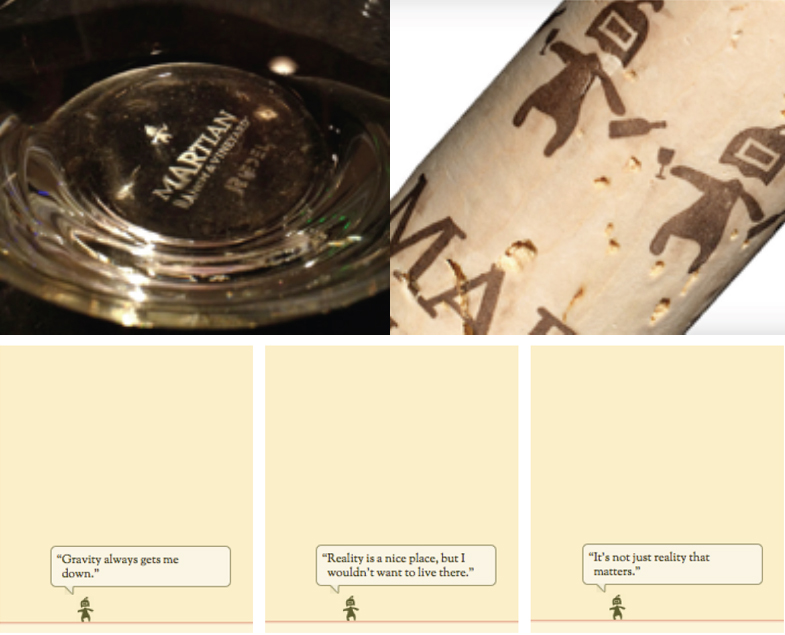
Then, when a site visitor goes to Martian’s landing page (no pun intended) for longer than 30 seconds, a tiny Martian character beams itself onto the site. It shares random thoughts like “Reality is a nice place, but I would not want to live there.” Needless to say, the Martian hunt was on and the buzz quickly spread, one glass at a time. All it took was one extra layer being subliminally added to the design language.
You need to dig deep into the core values of your brand. Is it humor, like Martian, or is it choice, like Baskin-Robbins? Incorporating hidden design language that speaks in unison with your brand values is useful and cost effective; you’re already going to pay to develop your brand’s identity and visual atmosphere.
Let the cleverness of your brand speak quietly, and you will hear the echo from your audience.


